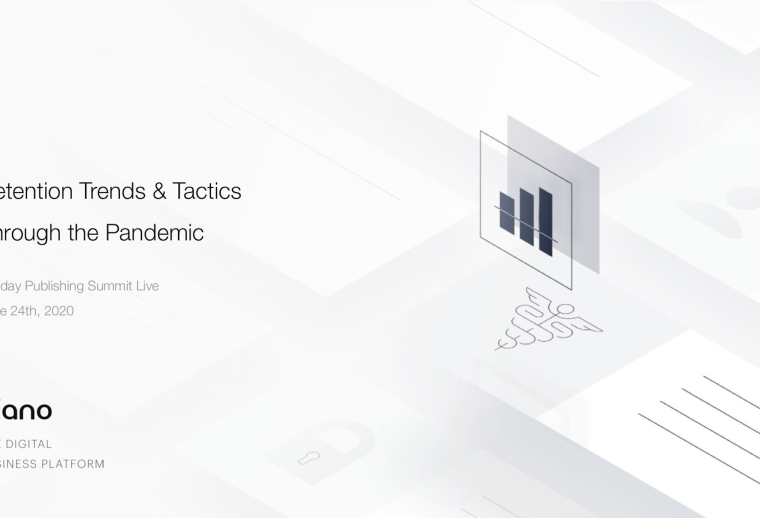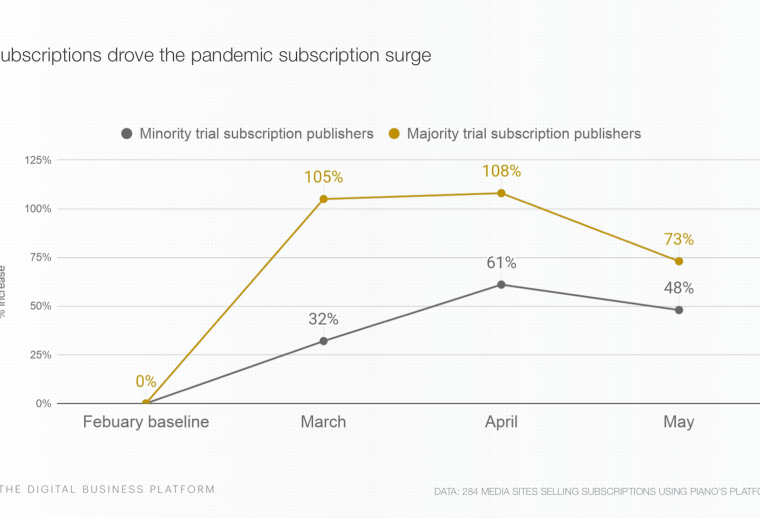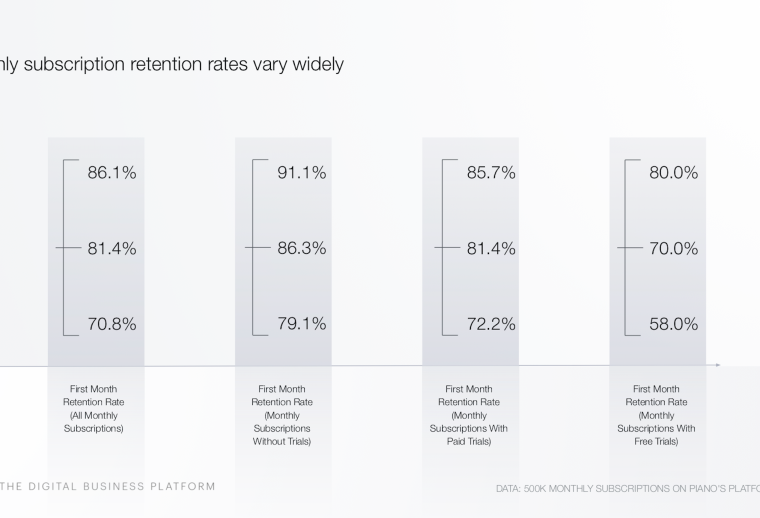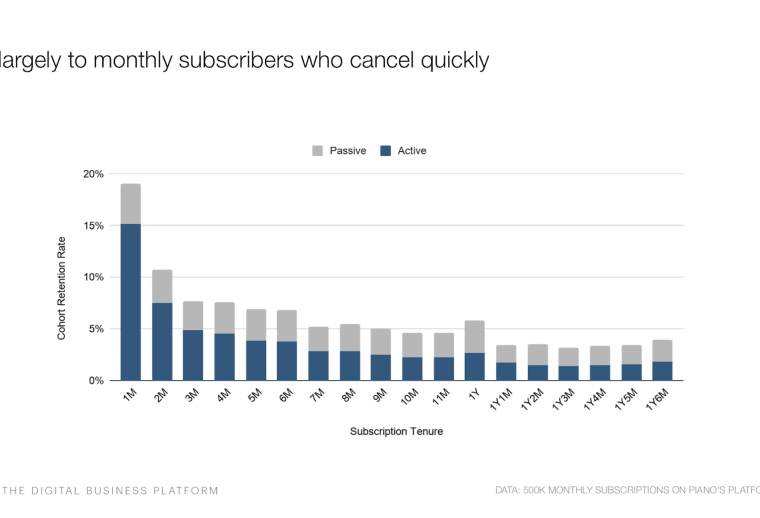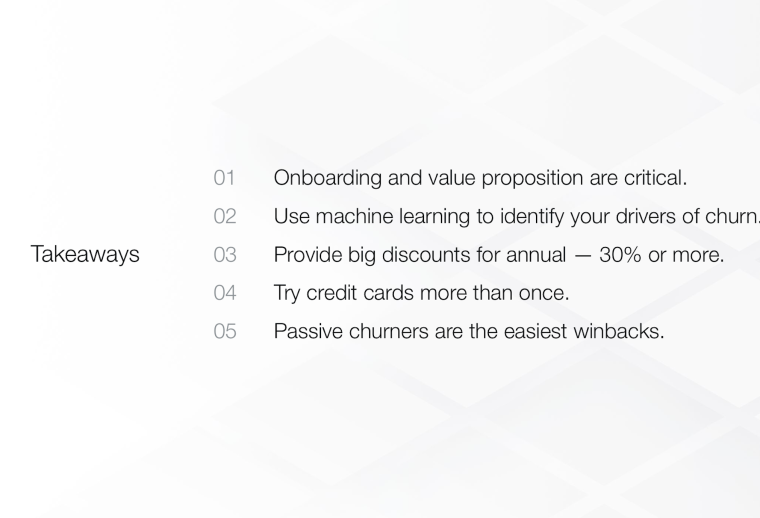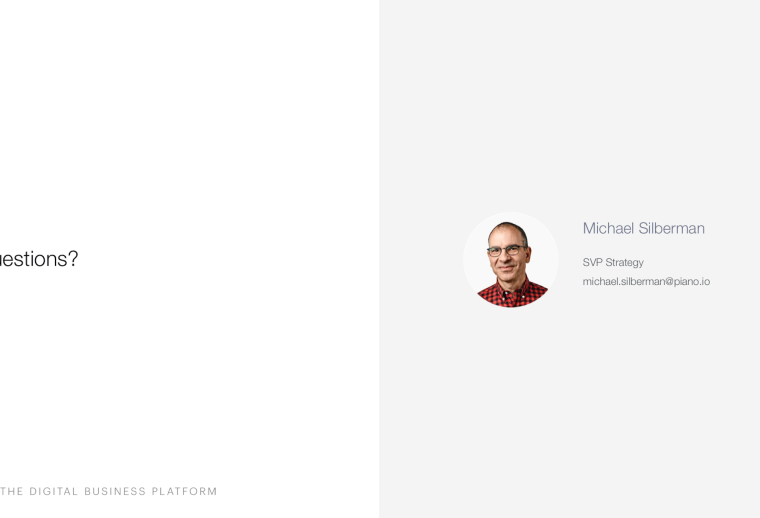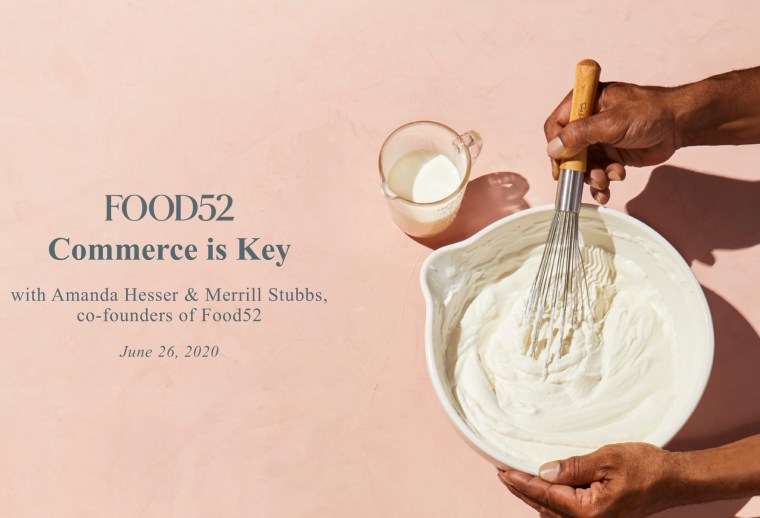
- 01 The era of mixed results
- 02 Audience highs shadow revenue fears
- 03 Publishers struggle to cash in on audiences through ads
- 04 Trials propelled a corona-bump in subscriptions, but churn fear is real
- 05 Publishers could struggle to manage after the end of the cookie
- 06 Pandemic-era video and virtual event tools are here to stay
- 07 Overheard
- 08 WTF: New terms explained
- 09 Event slides
- 10 Full session recordings
In the midst of a multi-pronged crisis, it’s not easy to get a lay of the land – much less predict what tomorrow looks like. But right now publishers are forced to do that every day. At the Digiday Publishing Summit Live, publishers and media execs convened virtually to take a step back, talk and assess.
Execs representing leading media brands and small-but-growing publishers shared frank details on risk-taking, testing and decision-making in unsettled times. They talked about how dramatic market shifts driven by the pandemic and the renewed movement toward racial justice has affected traditional revenue streams as well as new brands and businesses.
They shared honest assessments of what’s working and what isn’t. And they revealed their concerns about what might stop working. Overall, these experienced media minds are relying on a blend of hard data and gut instincts to evaluate where they’re at and how to build a sustainable future for an industry in drastic flux.
This Digiday Publishing Summit Deep Dive gathers key takeaways from the event, along with video of full sessions, presenter slides and analysis you might have missed – or want to check out again.
State of the industry
Ad position: web_incontent_pos1
The pandemic has hit many businesses hard, the publishing industry included. Meanwhile, our nation’s reckoning with hundreds of years of systemic racial inequities has trained a spotlight on issues all businesses must address.
Stuck at home, people crave information and entertainment more than ever. Interest in coronavirus news and coverage of the movement for racial justice has fueled a massive audience influx for news publishers. And non-news content from entertainment to fitness videos are generating tons of new pageviews.
“We saw the big traffic spikes that so many other people saw,” said Atlantic Media President Michael Finnegan. “Our traffic is still almost double what our normal rates would be.”
Despite huge audience growth as people sat home and gobbled media or dove into news about potent societal issues, publishers have had mixed results when it comes to cashing in on increased interest in their content.
When it comes to the industry’s biggest support mechanism, advertising, there’s a lot of inconsistency. Many say they are only now seeing sparks of renewed advertiser interest following an industry-wide ad spending pullout. Some say it won’t be enough.
Ad position: web_incontent_pos2
Flawed digital ad dynamics on display
The flawed dynamics of a digital media industry which allowed advertisers to track eyeballs instead of people within media context are in high relief. As Digiday editor-in-chif and president Brian Morrissey put it, “The original sin of internet media was separating audience data from media impression. It inevitably commoditized ad inventory. When you can just chase a cookie around the internet, the pendulum swung to simply the audience data.”
It’s still swinging. Along with the pandemic, the ensuing economic downturn, and racial inequity reaching a crescendo, another crisis on slow boil for years is about to spill over. Publishers and the advertisers they rely on for support are facing the death of the cookie. As media businesses navigate short-term decisions just to keep the lights on, they are forced to figure out ways to survive without the audience trackers – flawed or not – the industry relied on for so long.
And something even more immediate penalized lots of news outlets these past few months. Publishers producing crucial coverage of public health issues, police abuse and government response were penalized by keyword blocking that limited ad support around this important content. This, even as brands voiced their support for frontline workers and racial justice.
The killing of George Floyd by Minneapolis police has thrown a media environment still reeling from the coronavirus into another tailspin.
This moment of reckoning “isn’t different,” said Morgan DeBaun, founder and CEO of Blavity, which has covered police brutality and systemic racism since the platform’s inception. But, she said, “I hope that it becomes a moment of faster change.”
Subscription silver lining
It’s not all doom and gloom though. Many media businesses have seen growth in another traditional revenue stream – subscriptions. Contrary to concerns that people would tighten their wallets in a time of mass job loss and economic uncertainty, many who could afford to decided to invest in supporting the journalism and content they care about.
Publishers with subscription revenue models have found an array of ways to transform new and energized audiences into new subscribers. Now they must devise ways to hold on to them.
“Everything is accelerated right now,” said Morrissey. “These crises are gigantic stress tests for industries and for organizations.” Businesses that are willing to do the hard work now to get leaner and more efficient, he concluded, “should emerge poised to take disproportionate share when the recovery does happen.”
When the virus struck Wuhan, China, Bloomberg Media’s CEO Justin Smith recalled, “Sitting in New York, we just really didn’t appreciate what was going on.” Publishers are just beginning to get their bearings. Many said they have experienced a large influx of new readers and viewers, along with growth in rates of consumption among pre-existing users.
However, despite promising positive content metrics in general, the realities of the economic downturn make for an unstable environment for decision-making among media execs.
Pandemic inspired massive audience growth: People have flocked to content, generating huge spikes in audience consumption numbers for a variety of media outlets, from news to entertainment to food. Here’s what Publisher Summit speakers saw:
- “Overall views in March for the video team were up 140% compared to the previous month,” said Zainab Khan, audience strategy editor at The New York Times.
- Bloomberg Media drew record traffic in March and April driven in part by an increase in new readers.
- Hybrid publisher and e-commerce platform Food52 had a 50% increase in traffic which helped drive 170% higher shopping revenue year-over-year. “Having everyone be home has really validated, but also underlined the importance of what we do,” said Amanda Hesser, co-founder and CEO of Food52.
- Audience consumption rose 80% for Group Nine Media which publishes content brands including PopSugar and Thrillist. Fitness content on PopSugar and its YouTube channel grew 400%. Why? “The gyms are closed,” said Group Nine CRO Geoff Schiller.
Slow revenue return in Asia could portend the future in the U.S.: The drop in ad sales and decimation to live events that the public health crisis brought to Bloomberg Media in Asia by January and February repeated here in the U.S. in late March and April, said Smith. And, he said, a bounce back in ad revenue and live events has not come to full fruition in China. “I expect what will happen here is similar to what happened in Asia which is a very tentative return, maybe even more tentative in America because the public health situation is less under control.”
Overall, Smith implied he is doubtful business will be back to 2019 levels any time soon. “I’m not totally convinced that the media business will be back to where it was a year ago. I think it will be further back than that.”
- Minority media could be cautious to hire despite momentum: The momentum behind making real change to create racial justice could be a big opportunity for minority media. There is strong pressure to strike while the iron is hot. But Blavity’s DeBaun acknowledged that taking action to create desired change as a business right now during the pandemic is just plain risky. “It is a weird moment where I want to ramp up and I want to hire more, but it’s not always the best business decision,” she said. “The challenge at the leadership level is we are still in COVID.”
Bottom Line: Publishers are still unsettled in an economic environment that’s difficult and even foolhardy to forecast. Some, like Group Nine, are being rewarded for pivoting to respond to what’s working, like producing fitness content. And some media businesses such as Blavity are taking a methodical approach to decision making, recognizing a need to balance sustainability with opportunity.
Put simply, news-hungry audiences have been difficult to monetize through advertising. Advertisers used keyword blocking to avoid brand adjacency to the most pressing issues of our time – the virus, police abuse and racial justice issues. That hurt some publishers just when they thought ad dollars were starting to resurge.
Meanwhile, with new subscribers flocking to some sites, publishers like Atlantic Media took advantage by suppressing ad inventory to promote subscription offers.
- Keyword blocking penalized COVID and racial justice publishers: Advertiser interest had just started to come back to Blavity after the virus drop, said DeBaun. Then the surge in coverage of George Floyd’s killing and police brutality exploded. “Advertisers then were starting to come back because COVID was slowing down, but then this hit, and so advertisers paused their campaigns out of respect. But as a Black media publication, when you think about keyword blocking, we have ‘Black’ and ‘African-American’ and ‘police’ and ‘brutality’ on all of our news articles so we can’t run ads on them. So I’m taking so many financial hits for doing what’s right and covering what’s right and what’s true.”
One news publisher during a virtual Publisher Summit Townhall discussion said there’s a disparity in ad rates in the controversial content driving big audience spikes. “There’s a clear gap in rates” for RPMs and CPMs in protest and COVID-19 related coverage, he said.
- Consider repurposing some ad units to promote subscriptions: A large influx of users have been coming to The Atlantic to read coronavirus coverage, and the publisher wanted to take advantage of all those users to test out subscription offers. So they decided to pull some ad inventory normally used for programmatic buys and gave those units new jobs promoting subscription offers. “We completely turned that over to our promotion,” said NAME. The Atlantic calls the persistent unit at the bottom of all its pages “the nudge,” he said. “We saw a lot of people convert straight from that.”
- Some spot glimmers of ad revenue gaining strength: One news publisher speaking during the summit’s virtual Town Hall discussion said he is optimistic the ad market is coming back. “The last week we’ve seen some stability come back,” he said, calling it a strong way to end the quarter. Other Town Hall participants said they experienced programmatic ad revenue increases through June. One even said travel advertiser spending was up.
Bottom Line: The outlets covering crucial issues were not able to capitalize on a massive audience influx during a time in which many ad-supported news outlets struggle to survive. While advertisers fail to reward content connecting their brands to serious or controversial issues, some news sites especially might do better to use some poor-performing ad slots for alternative purposes as the ad downturn persists.
The massive increase in traffic driven by a rapt at-home audience during the pandemic compelled people to subscribe to news outlets especially. Subscriptions were up 84% in March, 95% in April and 66% in May globally among the publishers subscription management company Piano works with. News events and subscription trial offers propelled those higher subscription rates, said Michael Silberman, svp of strategy at Piano. “That’s becoming a real pattern,” said Silberman.
The Atlantic’s Finnegan called the company’s new contingent of paying readers “crisis subscribers.”
Bloomberg Media is “leaning in very, very intensively into the direct consumer subscription business,” said Smith. But even though subscriptions can be a more stable and reliable line of revenue for publishers than advertising is these days, fear is settling in: What if those crisis subscribers drift away?
- Higher growth for those who offered trial subscriptions: Among Piano’s publisher clients in March, April and May, “trial subscriptions drove much, much higher growth,” said Silberman. “Publishers that did [offer trial subscriptions] lowered that barrier to entry and converted more of those marginal users,” he continued. “Sites that didn’t offer trials or had less attractive trials didn’t see the same kind of growth.”
And, contrary to what may have been expected, active churn among people who signed up with Piano’s publisher clients through trial subscriptions dropped 14% in March and April, said Silberman.
Lifting the paywall actually drove subscriptions: It may seem counterintuitive, but at The Atlantic, unlocking the gate to content related to the pandemic actually helped convince readers to pay anyway. Repurposing a former advertising unit to promote subscription offers “actually became really helpful for us in the past several months when we made our coronavirus coverage free,” said Finnegan. He said the publisher added 35,000 subscribers in March; 35,000 in April; 50,000 in May; and 45,000 through the last full week of June. We were “reminding people of our mission, our importance in the moment,” said Finnegan.
- To chill churn, consider testing and surveying subscribers: Subscribers are great, until the drop off. Now that publishers are coming back down to earth following a boost in pandemic lockdown subscribers, they must work to keep them. The Atlantic is about to find out what will happen when its first round of annual subscribers are asked to renew soon. “There is some concern they may churn at a higher rate,” said Finnegan. So, the company is testing renewal subscriptions and even conducting qualitative and quantitative studies of subscribers.
Bottom Line: The last few months have been atypical to say the least. Despite the fact that people recognized the value of content by ponying up to buy subscriptions while they were hunkered down at home, there’s no telling they will remain consistent subscribers going forward. “The big test will be whether they stick around,” said Digiday’s Morrissey. “Because we’re in an economic downturn…people generally don’t want to spend as much money when they’re making less money.” Those with the resources will test and survey in the hopes of holding on to those subscribers for the long run.
Within the next two years, all the top browsers will stop accepting third-party cookies. There’s lots of talk about what marketers and publishers will use to replace them, but not much more than talk.
Of course, vendors are scrambling to fill the void. Firms including LiveRamp, Neustar and Omeda all have solutions. And many publishers and brands will consider adding technologies like theirs to already-toppling tech stacks to helps manage consumer identity.
But some, like Bloomberg’s Smith think publishers are not prepared, especially as platform dominance looms.
- Don’t relegate post-cookie planning to a separate group: Branded content publisher Dotdash has a cookie task force that meets each week to educate colleagues, determine priorities and define goals for dealing with the impending post-cookie ad environment. “I don’t think that you can isolate it to one group or one person,” said Sara Badler, head of programmatic at Dotdash. The decisions around this issue will affect every element of the business, so every team must be engaged, she said. “It kind of touches everyone from how our CEO thinks about it to the product team to our operations team, and then also even just from a strategy perspective – how we build, plan, how we look at things.”
- The industry won’t tolerate a patchwork of identifiers: People assessing ways to enable data-driven advertising without cookies are already leery of another onslaught of disparate technologies. Badler said she is concerned there will come a day when there are too many identity components for publishers to manage. “All of these companies have created identifiers; we can’t put all of these on our page,” she said. “We need to do something collectively especially from the publisher perspective,” said Badler. “We need something that scales and is going to last.”
- Publishers are slow to innovate on first-party data: Advertisers will want more opportunities to target through first-party data to narrow, high-quality audience segments, said Bloomberg’s Smith. But he’s not sure publishers are ready to give make that happen. “With more innovation around first-party data, better execution and integration of marketing services, if you deliver a very targeted audience in a very high-quality environment, I think there’s a viable ad business in a post-platform world to be built,” said Smith. “I’m just not sure the industry has really put its best foot forward there yet.”
Bottom Line: No matter what, now is the time for publishers to do more than just “start thinking about” what to do when third-party cookies go away. Publishers will want to build and take better control over their own first-party data. This is the information that will allow them to own more of the conversation between brands and their audiences.
Virtual meeting and collaboration tools have become mainstays for all sorts of businesses. Telehealth doctor visits have replaced what used to be in-person visits. Just like those pandemic-era approaches, we can expect to see many of the techniques and tools publishers have adopted in recent months to persist long after the virus is gone.
For some publishers, the simple, cheaper digital tools they were forced to use to shoot and produce video during lockdown could become the tools of choice in some cases. Other publishers once focused solely on in-person events have found value in virtual conventions. And, because shooting video on a cellphone or holding an event virtually offers more versatility and cost-efficiency, we’re likely to see more of these approaches if audience response is positive.
- More openness to scrappy video techniques: The New York Times more often in recent months has used virtual event tools like Google Hangouts and scrappier video techniques for shooting video on mobile devices. Going forward, “The name of the game here is just being resourceful,” said Alexandra Eaton, showrunner at the NYT. The willingness to use less-sophisticated tools also heightens the value of more traditional filmmaking approaches, said Eaton. “That type of footage is even more valuable now than ever,” she said. “Seeing real cinematographer-shot video is a little bit of a premium right now, so it kind of has an elevated feeling that it didn’t before.”
- Global interactivity through virtual events: The Washington Post has seen some payoff from sponsorship dollars following its initial investment in virtual events, said the publisher’s vp of communications and gm Kris Coratti. So, she expects virtual events launched during the pandemic era will continue for the foreseeable future. “We have a lot of opportunity to be creative with sponsors and work with them and so what we’ve found is from a revenue perspective particularly with the increase in frequency we’ve managed to maintain the dollars.”
Part of the appeal is the ability to reach a global audience. But community and interactivity is important, too, she said. “They’re more in-depth. You have the space to have the conversation; people interact in a way they can’t when you’re just watching television.”
- Virtual events will complement in-person: Bloomberg is betting on capturing more market share in the world of in-person events when it’s safe again for people to convene, said Smith. However, the company expects to incorporate aspects of virtual events in future in-person events. Virtual events “will become much more of a complement to live events than they’ve ever been before and ultimately much more of a larger source of revenue, too,” he said.
Bottom Line: Publishers with the resources and staff to invest in and test new approaches during the pandemic have added new skills, methods and tools to the way they did things before. They have data and analytics that shows them what worked to create new and different video and event audiences. Especially because many of those methods and tools that worked were less expensive and more flexible than traditional ones, it makes sense that many will incorporate elements of what worked into longer-term plans.
- “Literally the day that [P&G] said that is the same day that three of our RFPs from them get declined. So, I just don’t believe the words until I see the results.” – Morgan DeBaun, founder and CEO of Blavity after P&G CMO Marc Pritchard said the company would boost investment in Black-owned or -operated media.
As P&G and other brands declare their support for racial justice through splashy ads and big announcements, they will be criticized if they don’t back it up with real action.
- “Many of our relationships [with publishers] before all of this weren’t very nuanced. [Now] people are asking things about word count, looking at funnels for referrers, what they should optimize for traffic coming in from Facebook, Twitter or Reddit versus what’s happening organically.” – Richard Marques, CEO of RevContent discussing increased publisher sophistication during the pandemic
Publishers, especially smaller ones, will struggle to emerge from the economic downturn with a viable business. They’ll need to be more cognizant of how outside forces affect their audiences, and use analytics to respond to change.
- “The platforms…they are going to increase their strength and their market share out of this pandemic in an environment where CMOs have less dollars to spend. I think the scale and the performance metrics and the efficiencies of the platforms will prove very attractive, and unfortunately the publisher business has not yet come up with alternative advertising models that are competitive.” – Justin Smith, CEO of Bloomberg Media
Google, Facebook and other giant media platforms have the upper hand. They have bigger audiences, more first-party data and more resources advertisers will want as they seek to extend their marketing dollars further. Some publishers are simply not set up to respond quickly enough to the challenges they face during the economic downturn.
WTF is a Sleeper?
In the context of publisher subscriptions, a sleeper is a dormant subscriber. While many subscribers are highly engaged, returning to a publication several times in a month, some are not active. Subscription management platform Piano defines a sleeper as a subscriber who has not visited a media outlet at all in the last 30 days.
WTF is Authenticated Identity?
As the industry seeks ways to identify and target users without third-party cookies, vendors with large databases of user identity profiles are promoting the concept of authenticated identity. Put very simply, their systems intercept a user email or another piece of identity information, then look it up in their databases. If it is determined that the identifier is indeed connected to an actual existing profile rather than, say, a bot, it is deemed to be authenticated.
WTF is a CDP?
CDP is short for Customer Data Platform. CDPs have gained prominence over the past couple years. Most CDPs ingest and normalize customer data, and unify profile information by connecting pieces of information associated with a customer. Some perform customer segmentation and help personalize marketing or advertising messages.
Retention Trends and Tactics Through the Pandemic with Piano
Commerce is Key with Food52
Day 1
- State of the Industry with Brian Morrissey, president and editor-in-chief, Digiday Media
- Managing out of Crisis with Justin Smith, CEO, Bloomberg Media
- Retention Trends and Tactics Through the Pandemic with Michael Silberman, svp of strategy, Piano
- How to Keep Subscribers from Churning with Michael Finnegan, president, Atlantic Media
- Actionable Data 101 with Richard Marques, CEO, Revcontent
- In Memoriam: The Third-Party Cookie with Sarah Badler, head of programmatic, Dotdash
- Building an Authentication Strategy in a Cookieless World with Jason White, svp and head of publishers, LiveRamp
Day 2
- Digiday Podcast LIVE with Morgan DeBaun, CEO & founder, Blavity and host Brian Morrissey, president and editor-in-chief, Digiday Media
- Content Metering for Audience Growth with James Capo, chief revenue officer, Omeda
- Why Diversified Revenue Saved the Media Industry with Geoff Schiller, CRO, Group Nine Media
- Firework Network & The Short Video Era with Bill Jennings, president, Firework Network
- Betting on Video and How Production has Changed with Alexandra Eaton, showrunner, The New York Times, and Zainab Kahn, audience strategy editor, The New York Times
Day 3
- Will Virtual Events Be Here to Stay? with Kris Corratti, vp, communications & GM, Washington Post Live
- Maintaining Addressability and Securing Media Dollars in a Post-Cookie World with Devin Beblasio, product marketing director, identity and privacy, Neustar
- Commerce is Key with Amanda Hesser, co-founder & CEO, Food52 and Merrill Stubbs, co-founder and president, Food52
